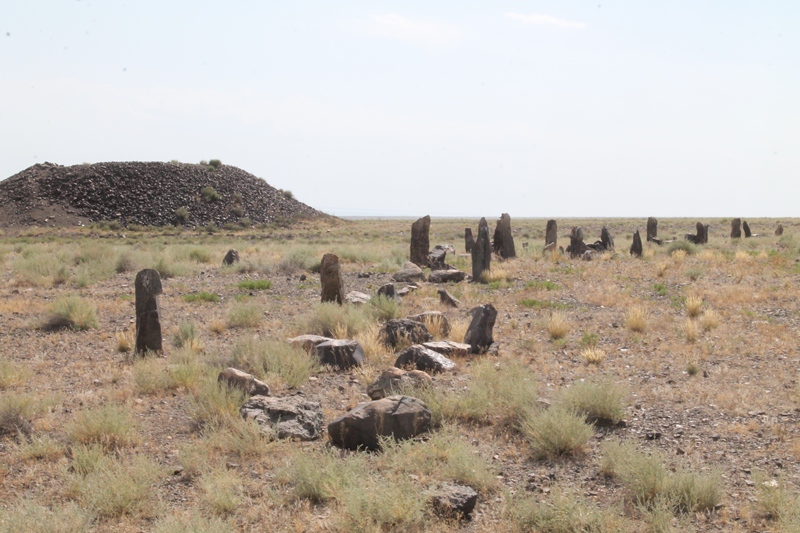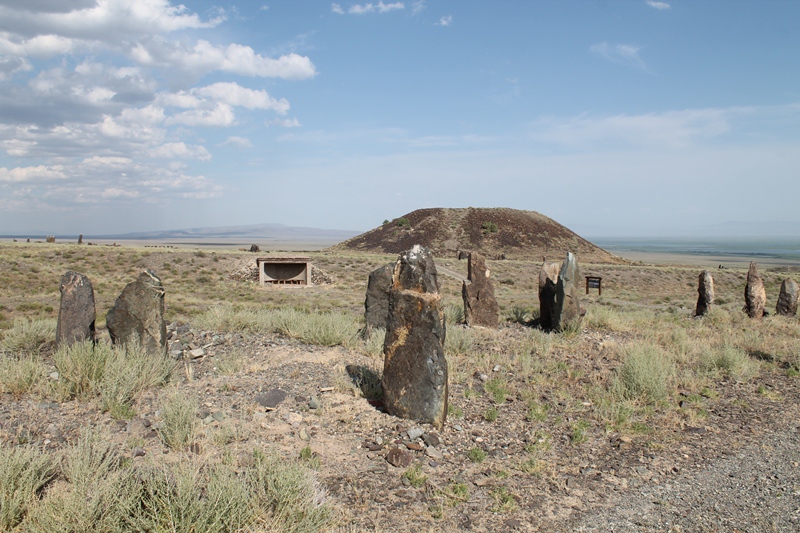
The purpose of the visit is to plunge into history, to make a historical and cultural journey to the burial grounds of Besshatyr, the secrets of which are not yet fully revealed, and it is a witness of thousand-year events. The motocross team was greeted by the local kurgan guardians who introduced the group to Besshatyr.
Necropolis of Besshatyr (Five tents) was a place of worship of the ancient Saks who lived on the territory of Kazakhstan in the 1st millennium BC. Here, on an area of 2 square km, the burial ground of Besshatyr is located - the most significant monumental and compositional complex is the archaeological monument of the ancient people of Semirechye - Saks. The burial ground is located in the area of Semirechye, in the headwaters of the Ili River, in the territory of the state national park "Altyn-Emel", 170 km from Almaty. It stretches from north to south for 2 km, from east to west - for 1 km.
The burial ground consists of 18 tsar's burial mounds from 8 to 70 m in diameter and from 2 to 20 m in height. Common to all burial mounds of the burial ground is that they are all of the same type and represent a burial vault, a labyrinth of complex construction: the corridor - atrium - the burial chamber. Funerary chambers up to 20 square meters and a height of 3 m, which were under embankments of stone and gravel, well preserved. Only in two burial mounds the chambers were burned.

In the mound of Tenlik a rich burial was discovered, among the various ornaments of clothes made of sheet gold, there was an iron rod encrusted with gold. The largest mound has a diameter of 105 m, a height of about 20 m and a radius of the circle - 250 m. Scientists estimated that for its erection it was spent about 40 thousand days. The mound is surrounded by a chain of 93 stone fences, which are located around the mound in the form of a spiral with unbroken ends. On some fences there are embossed tamgas. Five km to the north-east of the large burial mounds there are 7 fences similar in shape and design to the fences of Besshatyr mounds, and a chain of 45 stone slabs with carved images of animals stretches from north to south 10 km to the west of the tsar's borders.

These structures mark the boundaries of the ritual platform of the necropolis of Besshatyr. It remains mysterious to know the origin and purpose of underground passages with branches dug in the bedrock at a depth of 2 m below the floor of the tomb. The total length of the underground passages discovered under the mound No. 6 is 55 m, the tunnel height is 1.0-1.7 m, and the width is 0.8 m. There is no doubt that the underground passages are directly related to the burial ritual.

The monument of Besshatyr was undoubtedly the sacred place for the Saks who lived in the southeast of Kazakhstan in the 5th-4th centuries BC. In its monumentality and complexity, Besshatyr has no analogues in the whole of Central Asia. Necropolis refers not only to cultural and historical monuments, but also to a particular type of natural and cultural landscape. The pyramids of Besshatyr architecturally complete the surrounding area, giving it an enduring charm and admiration for the mysteriousness of these places. In the memory of the current and future generations, Besshatyr should be remembered as a unique cultural complex of the Altyn-Emel National Park. We need to restore the shattered balance between humanity and the environment.
By Daulet IZTELEU
Translated by Raushan MAKHMETZHANOVA
